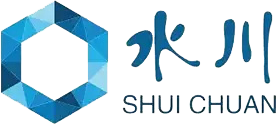In recent years, the textile and dyeing industries have witnessed a transformative shift towards sustainability, prompting an increased focus on eco-friendly materials and production methods. One such innovation is Sulphur Black Liquid, a versatile dye that is gaining traction for its reduced environmental impact compared to conventional synthetic dyes. According to the Global Textile Chemicals Market Report, the demand for sustainable dyeing solutions is projected to grow at a CAGR of 5.2% through 2025, highlighting the industry's urgent need for eco-conscious alternatives. Sulphur Black Liquid not only meets this demand but also offers exceptional colorfastness and cost-effectiveness, making it increasingly appealing to manufacturers and consumers alike.

This blog will delve into the innovations surrounding Sulphur Black Liquid, offering insights into sustainable sourcing practices that can help businesses capitalize on this burgeoning trend while fostering environmental responsibility.
 As we move towards 2025, the production of Sulphur Black Liquid is on the cusp of significant innovation driven by sustainability trends and technological advancements. Industry reports suggest that the global market for Sulphur Black is projected to grow at a compound annual growth rate (CAGR) of 4.5%, reaching an estimated value of 1.2 billion USD by 2025. This growth is largely attributed to the rise in demand for sustainable dyes and colorants across various industries, including textiles and cosmetics.
As we move towards 2025, the production of Sulphur Black Liquid is on the cusp of significant innovation driven by sustainability trends and technological advancements. Industry reports suggest that the global market for Sulphur Black is projected to grow at a compound annual growth rate (CAGR) of 4.5%, reaching an estimated value of 1.2 billion USD by 2025. This growth is largely attributed to the rise in demand for sustainable dyes and colorants across various industries, including textiles and cosmetics.
Emerging trends indicate a shift towards using renewable feedstocks and green chemistry techniques in the production process. According to a recent market analysis, approximately 30% of manufacturers are investing in biobased alternatives to traditional synthetic processes. This transition not only reduces the carbon footprint of production but also enhances the lifecycle sustainability of Sulphur Black Liquid, aligning with the broader objectives set by environmental regulations and consumer preferences for eco-friendly products. With these advancements, companies can not only meet market demands but also contribute positively to the circular economy.
In the quest for sustainable manufacturing, sourcing strategies for materials like sulphur black liquid are becoming increasingly vital.
According to a recent report by Smithers Pira, the demand for sustainable textiles is projected to grow at a compound annual growth rate (CAGR) of 9.2% from 2020 to 2025. This shift emphasizes the need for manufacturers to adopt eco-friendly sourcing practices, particularly in the dye production segment. Sulphur black liquid, known for its deep color and cost-effectiveness, can be produced sustainably through eco-efficient processes that minimize environmental impact.
Responsible sourcing strategies revolve around transparency and traceability in the supply chain. A 2022 survey conducted by Textile Exchange indicated that 66% of brands are investing in sustainable sourcing technologies to ensure ethical production. By collaborating with certified suppliers and implementing life cycle assessment tools, companies can significantly reduce their carbon footprint while maintaining product quality.
This proactive approach not only aligns with consumer demand for greener products but also fulfills regulatory requirements, positioning manufacturers at the forefront of the sustainability movement in the textile industry.
The sulphur black liquid industry is experiencing a transformative shift driven by innovative technologies that prioritize sustainability and efficiency. According to a report from Grand View Research, the global sulphur black market is expected to reach over $1.5 billion by 2025, propelled by advancements in production techniques and a growing demand for environmentally friendly alternatives. Cutting-edge methods, such as bio-based synthesis and waste minimization protocols, are redefining traditional practices, leading to a reduction in the carbon footprint associated with sulphur black production.

Digitalization is also at the forefront of this revolution. Implementation of AI-driven analytics and IoT technology enables manufacturers to optimize production processes and improve resource management. A recent study by MarketsandMarkets indicates that manufacturers utilizing these technologies can enhance operational efficiency by as much as 30%, while simultaneously lowering production costs. As the industry moves towards increased regulatory scrutiny on environmental impact, these innovative approaches not only ensure compliance but also position companies as leaders in sustainability.
In the evolving landscape of supply chain management, eco-friendly practices are becoming pivotal in enhancing resilience against disruptions. As businesses strive to uphold their environmental responsibilities, integrating sustainable sourcing methods for products like sulphur black liquid has grown critical. These practices not only contribute to reduced carbon footprints but also bolster supply chain robustness by diversifying resource availability and minimizing dependency on conventional suppliers.
Embracing eco-friendly sourcing allows companies to adapt swiftly to market fluctuations and regulatory changes. By fostering partnerships with suppliers committed to sustainability, businesses can ensure a steady, responsible flow of materials, thus mitigating risks associated with environmental compliance and resource scarcity. Furthermore, incorporating life cycle assessments and green certifications in the procurement process enhances transparency and encourages innovation in product development, ultimately leading to a more resilient and future-ready supply chain.
This chart illustrates the projected adoption rates of eco-friendly practices in the sourcing of Sulphur Black Liquid from 2023 to 2025. The data reflects the increasing emphasis on sustainability within the supply chain, highlighting the need for resilience and innovation in the industry.
The demand for Sulphur Black Liquid is witnessing a notable surge, driven by its applications in various industries, particularly textiles and coatings. According to a recent market analysis by Mordor Intelligence, the global Sulphur Black market is projected to grow at a CAGR of 4.5% from 2022 to 2027. This growth is largely fueled by the increasing demand for sustainable and eco-friendly colorants that meet stringent environmental regulations across the globe. Notably, the textile sector accounts for over 60% of the total consumption of Sulphur Black, highlighting its critical role in meeting the rising expectation for sustainable sourcing.
Future potential for Sulphur Black Liquid is further enhanced by innovations in green chemistry and the push for sustainable practices within the industry. Reports from Allied Market Research indicate that the shift towards bio-based products is expected to create new avenues for Sulphur Black formulations, particularly as manufacturers seek alternatives to conventional, petrochemical-derived materials. This transition not only aligns with global sustainability goals but also provides brands with a competitive edge in an increasingly eco-conscious market. As industries evolve, the strategic sourcing of Sulphur Black Liquid will become essential for companies aiming to reduce their environmental footprint while meeting consumer demand for sustainability.
| Parameter | 2023 Data | 2025 Projections | Growth Rate (%) |
|---|---|---|---|
| Global Demand (Tons) | 500,000 | 650,000 | 30% |
| Market Value (Million USD) | 1200 | 1600 | 33.33% |
| Sustainable Sourcing (% of Total) | 15% | 30% | 100% |
| Key Applications | Textiles, Paints, Inks | ||
| Emerging Markets | Asia-Pacific, Latin America | ||
